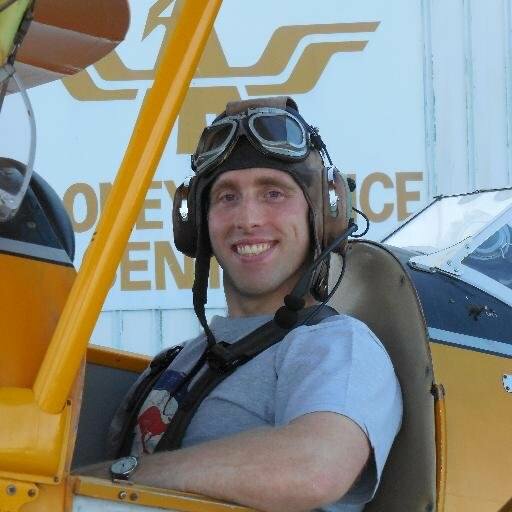Last updated December 21, 2017 at 2:53 pm
As we get ready to say goodbye to 2017 let’s take a look at 2018, which is shaping up to be another year of great discoveries.
Riding the gravitational wave
After a spectacularly successful observing run, the LIGO and Virgo gravitational wave detectors have shut down for upgrades that will make them more sensitive.
When they are switched back on in late 2018 they will be able to detect gravitational wave events further out in space, and with more space to explore there will be more events for the detectors to find. The improved detectors could make as many as one gravitational wave detection per week.
While we expect to see more colliding black holes and neutron stars, the scientists from LIGO and Virgo are hoping to find events that have never been seen before. The upgraded detectors might be able to find the gravitational waves produced by rapidly spinning, lopsided neutron stars, and from supernova explosions. These events would allow the scientists to get a better understanding of how gigantic stars live and die.

Simulation of two neutron stars spiralling in to a collision and emitting gravitational waves. (Image credit: NASA)
On the event horizon
2018 could be the year we get our first glimpse of the edge of a black hole. A black hole’s outer edge is called its event horizon, the point of no return at which the black hole’s gravity becomes so strong that not even light can escape.
Over the past year a network of radio telescopes spread across the world, collectively called the Event Horizon Telescope (EHT), has been gathering data from the region around the supermassive black hole in the centre of our galaxy, and from around the even larger black hole in the centre of a galaxy called M87. The data are currently being processed and are due to be ready in 2018.
The images from the EHT will let us see how well Einstein’s General Theory of Relativity holds up under the extreme conditions at the edge of a black hole.

Map showing the positions of the individual radio telescopes making up the Event Horizon Telescope. (Image credit: ESO)
When particles collide
The world’s most powerful particle accelerator, CERN’s Large Hadron Collider (LHC), has also shut down for a Christmas break. When it restarts in early 2018, the LHC will resume studying the workings of the fundamental particles that make up everything we see.
After announcing the discovery of the Higgs boson in 2012 the LHC has continued to work to close the gaps in our understanding of how fundamental particles work, successfully discovering several new particles and testing theories of physics.
In 2018, the LHC’s scientists will be trying to solve the mystery of an anomaly in the data from the collider. For months a strange signal has been present in the data. It could be an indication of a new, unexpected particle, and new laws of physics, but it is not strong enough for the scientists to be certain.

An artist’s concept of a new particle found at the LHC. Will there be more in 2018? (Image credit: CERN)
All the way with the SKA
In 2018 construction will begin on the Square Kilometre Array (SKA) telescope.
For the past five years, over 600 engineers and scientists from more than 20 countries have designed the SKA to be the largest and most powerful radio telescope ever built. The SKA will peer deep into the farthest reaches of space to answer questions about the evolution of the universe, the origin of the first stars and galaxies, where we came from, and whether we are alone in the cosmos or if there somebody else out there.
The design is due to be finished in early 2018, with construction beginning late in the year. The SKA will have thousands of individual radio antennas and will take decades to complete, but the first section will be finished and ready to study the universe from around the mid-2020s. We know the results will be spectacular, because the existing SKA precursor telescopes, MWA in Western Australia and MeerKAT in South Africa, have already mapped hundreds of thousands of galaxies in stunning detail.
Whole new worlds
As 2017 draws to a close there are nearly 4,000 known exoplanets, that is, planets orbiting stars other than our own. Amongst the 4000 are several possibly Earth-like planets.
In 2018, NASA will launch the Transiting Exoplanet Survey Satellite (TESS), which will take over the hunt for exoplanets from the spectacularly successful Kepler spacecraft, which is running out of fuel. Like Kepler, TESS will spot exoplanets by the shadow they cast as they pass in front of their star.
New detection techniques will also mean we find the exoplanets faster, and the number we know about will grow exponentially. This year, NASA and Google successfully teamed together to develop artificial intelligence to detect exoplanets in Kepler data.
With TESS watching a larger area of sky, and Google’s AI crunching the data at unprecedented speeds, 2018 might be the year we find another earth orbiting another sun.

NASA’s TESS spacecraft will uncover brand new worlds in our galaxy. (Image credit: NASA)
The science of tomorrow
With many dedicated scientists around the world working hard to discover new things and to better understand the world around us this list barely scratches the surface of what we hope to achieve in the next year. We have spacecraft zipping around the solar system, ingenious experiments all around the globe, sensitive telescopes scanning the skies, and we are constantly inventing more ways to find out how the universe works.
Science is rarely straight forward and the history of science is littered with surprises and chance discoveries. 2018 will be no different. Whatever happens, we will see our universe in a new and exciting light.









































